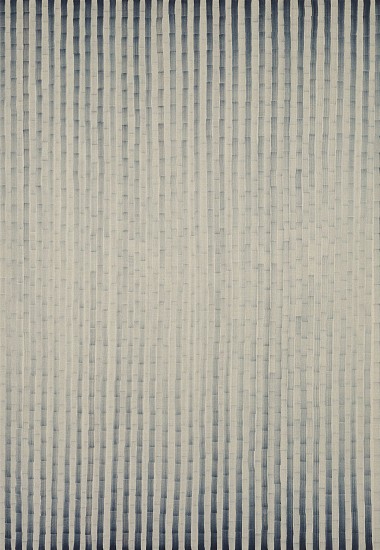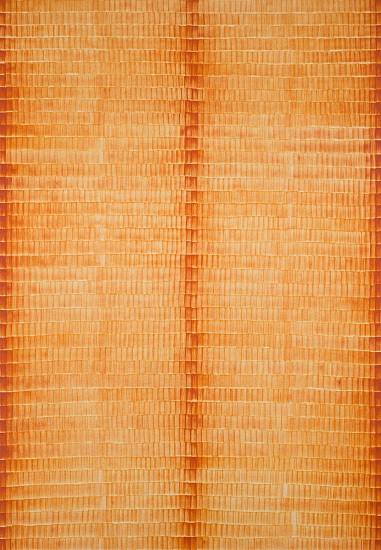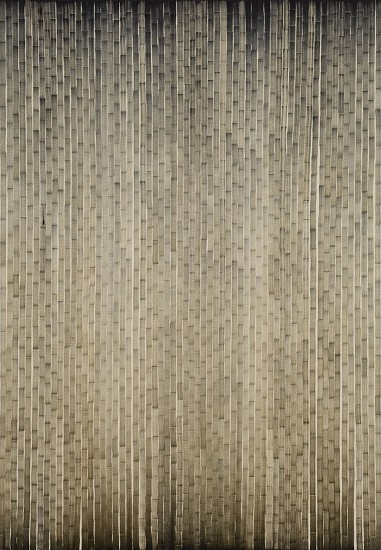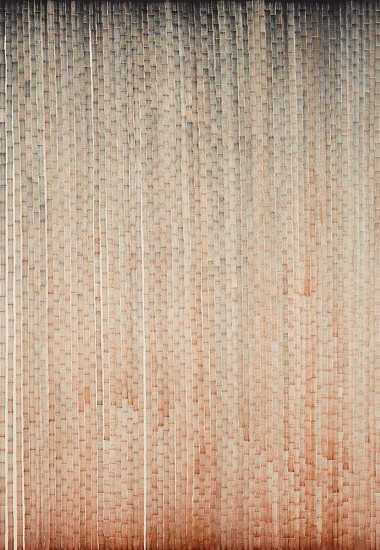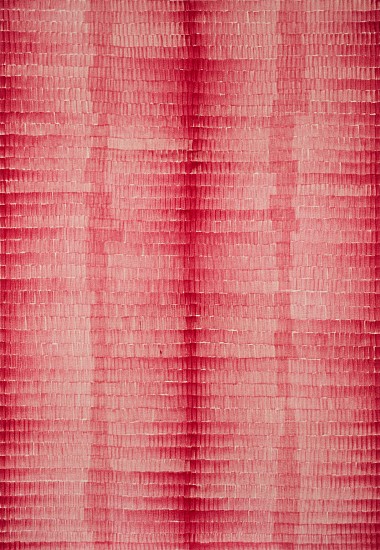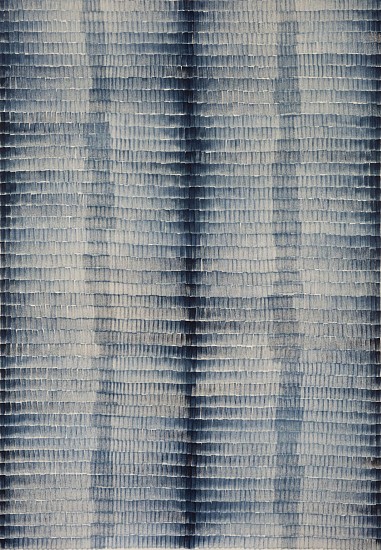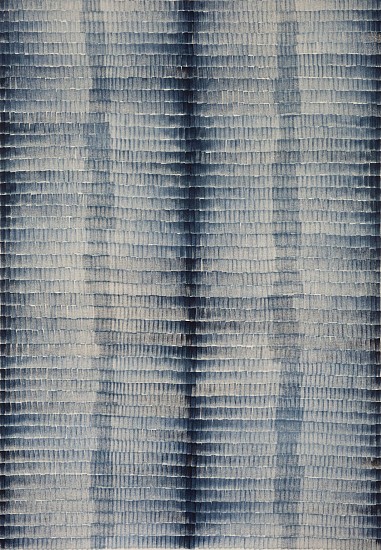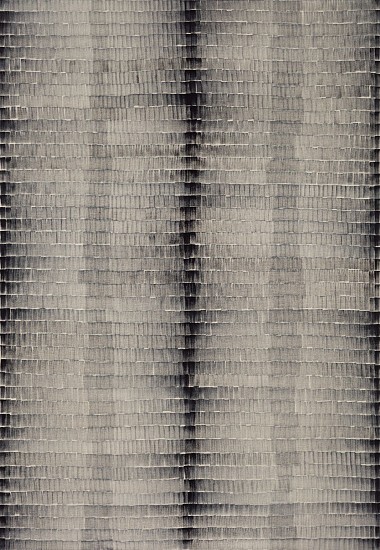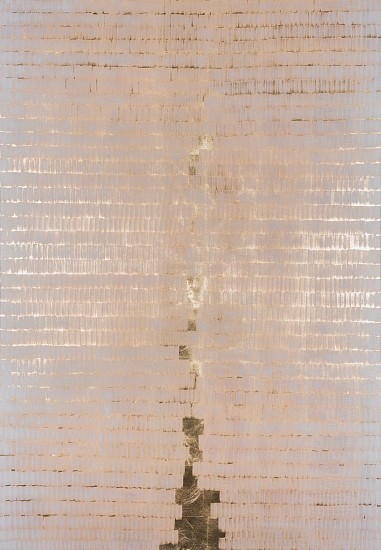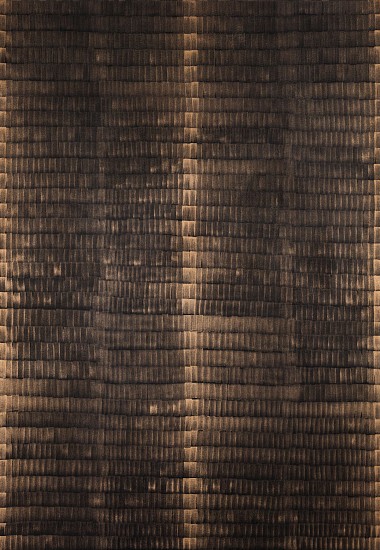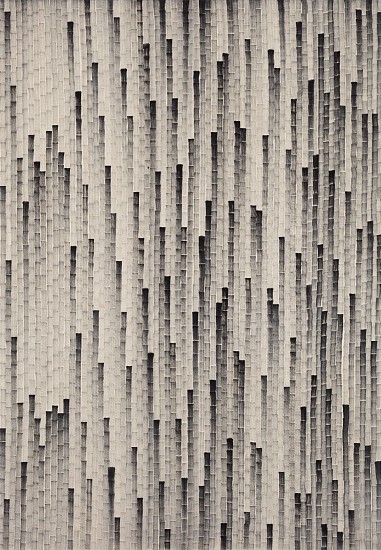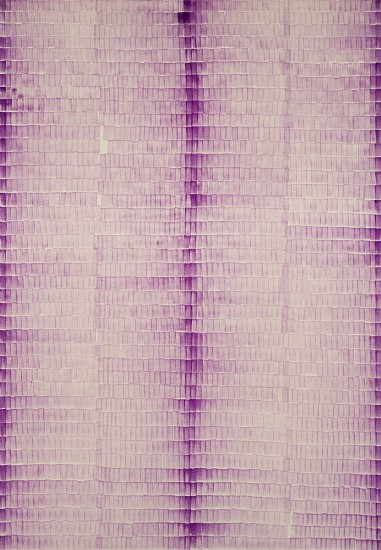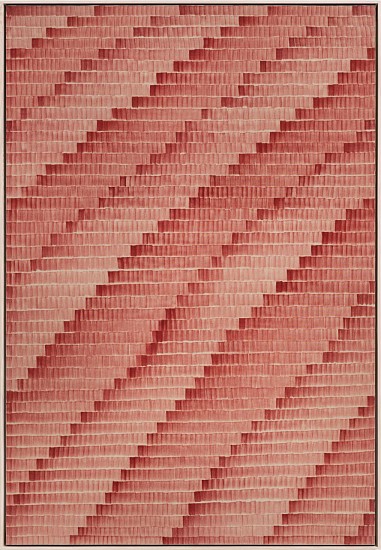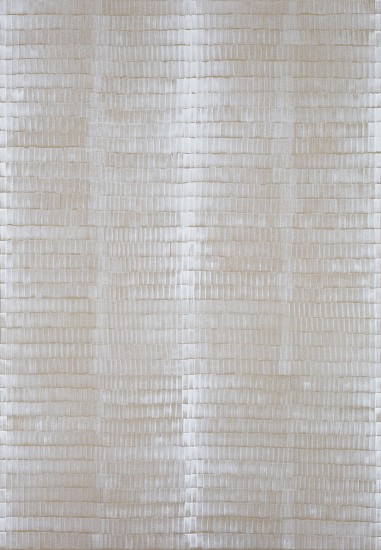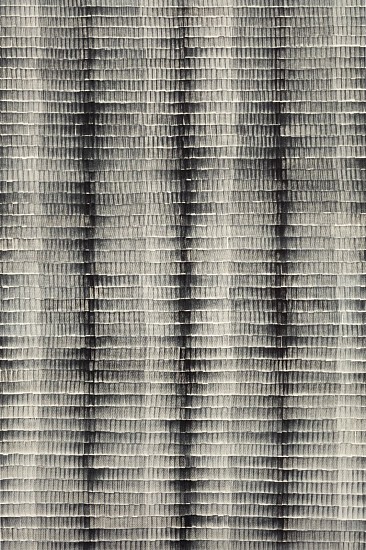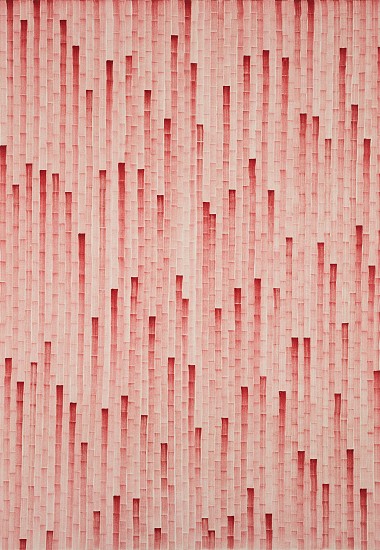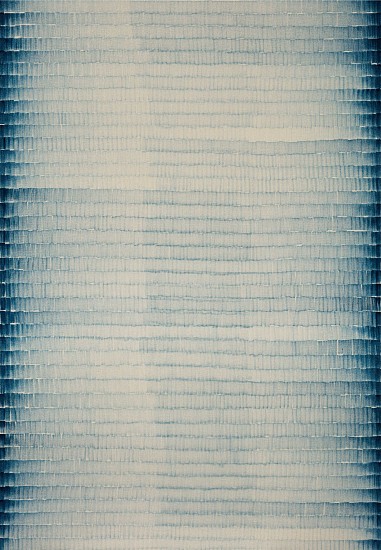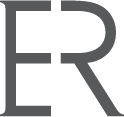CATHY ABRAHAM



CATHY ABRAHAM, Alternate loves Indigo
oil on Italian cotton canvas, 144 x 100 cm
Cathy Abraham’s practice is deeply influenced by artists from the Korean Dansaekhwa movement, along with the repetitive incantations of artists such as Roman Opalka and Agnes Martin, among others.
Abraham works systematically with repetitive gestures as a way of thinking through the patterns and experiences that mark our daily existence. The highly developed surfaces of her work consider boundaries between reality, fantasy and illusion.
‘I count brush marks as a form of meditation, allowing the mark of the brush to leave a visual trace as ghosts do. The “ghostings” are composed from an overlapping series of brushmarks. At first laden with paint the brush begins to make its mark yet through the sequence of strokes, its colour diminishes until there is only an unstable, fragmented residue. I cannot be sure what residues haunt and inspire me, as there are so many events I would like to forget, yet I remain aware of these experiences and their after-effects. By repeatedly drawing or painting the seemingly same mark, I am hoping to find expression for the inexpressible, bringing into existence that which is intangible yet felt.’




CATHY ABRAHAM, An orange splendour (6048 strokes)
oil on Italian cotton canvas, 144 x 100 cm
Cathy Abraham’s practice is deeply influenced by artists from the Korean Dansaekhwa movement, along with the repetitive incantations of artists such as Roman Opalka and Agnes Martin, among others. Abraham works systematically with repetitive gestures as a way of thinking through the patterns and experiences that mark our daily existence. The highly developed surfaces of her work consider boundaries between reality, fantasy and illusion. ‘I count brush marks as a form of meditation, allowing the mark of the brush to leave a visual trace as ghosts do. The ‘ghostings’ are composed from an overlapping series of brushmarks. At first laden with paint the brush begins to make its mark yet through the sequence of strokes, its colour diminishes until there is only an unstable, fragmented residue. I cannot be sure what residues haunt and inspire me, as there are so many events I would like to forget, yet I remain aware of these experiences and their after-effects. By repeatedly drawing or painting the seemingly same mark, I am hoping to find expression for the inexpressible, bringing into existence that which is intangible yet felt.’



CATHY ABRAHAM, Ascending and descending earth
oil on Italian cotton canvas, 144 x 100 cm
Cathy Abraham’s practice is deeply influenced by artists from the Korean Dansaekhwa movement, along with the repetitive incantations of artists such as Roman Opalka and Agnes Martin, among others.
Abraham works systematically with repetitive gestures as a way of thinking through the patterns and experiences that mark our daily existence. The highly developed surfaces of her work consider boundaries between reality, fantasy and illusion.
‘I count brush marks as a form of meditation, allowing the mark of the brush to leave a visual trace as ghosts do. The “ghostings” are composed from an overlapping series of brushmarks. At first laden with paint the brush begins to make its mark yet through the sequence of strokes, its colour diminishes until there is only an unstable, fragmented residue. I cannot be sure what residues haunt and inspire me, as there are so many events I would like to forget, yet I remain aware of these experiences and their after-effects. By repeatedly drawing or painting the seemingly same mark, I am hoping to find expression for the inexpressible, bringing into existence that which is intangible yet felt.’
CATHY ABRAHAM, Ascending and descending Mars, 2023
oil on stretched Italian cotton canvas, 144 x 100 cm (56 5/8 x 39 1/4 in.)
CATHY ABRAHAM, Cast in stone Crimson I (22 pathways)
oil on stretched Italian cotton canvas, 144 x 100 cm
CATHY ABRAHAM, Cast in stone Indigo depths (22 pathways)
oil on stretched Italian cotton canvas, 144 x 100 cm
CATHY ABRAHAM, Cast in stone peach black I (22
pathways)
oil on stretched Italian cotton canvas, 144 x 100 cm
pathways) | | Everard Read London




CATHY ABRAHAM, Crown
Oil and gold leaf on Italian cotton canvas, 144 x 100 cm
Cathy Abraham’s practice is deeply influenced by artists from the Korean Dansaekhwa movement, along with the repetitive incantations of artists such as Roman Opalka and Agnes Martin, among others. Abraham works systematically with repetitive gestures as a way of thinking through the patterns and experiences that mark our daily existence. The highly developed surfaces of her work consider boundaries between reality, fantasy and illusion. ‘I count brush marks as a form of meditation, allowing the mark of the brush to leave a visual trace as ghosts do. The ‘ghostings’ are composed from an overlapping series of brushmarks. At first laden with paint the brush begins to make its mark yet through the sequence of strokes, its colour diminishes until there is only an unstable, fragmented residue. I cannot be sure what residues haunt and inspire me, as there are so many events I would like to forget, yet I remain aware of these experiences and their after-effects. By repeatedly drawing or painting the seemingly same mark, I am hoping to find expression for the inexpressible, bringing into existence that which is intangible yet felt.’



CATHY ABRAHAM, Golden spine II
oil on Italian cotton canvas, 144 x 100 cm
Cathy Abraham’s practice is deeply influenced by artists from the Korean Dansaekhwa movement, along with the repetitive incantations of artists such as Roman Opalka and Agnes Martin, among others. Abraham works systematically with repetitive gestures as a way of thinking through the patterns and experiences that mark our daily existence. The highly developed surfaces of her work consider boundaries between reality, fantasy and illusion. ‘I count brush marks as a form of meditation, allowing the mark of the brush to leave a visual trace as ghosts do. The ‘ghostings’ are composed from an overlapping series of brushmarks. At first laden with paint the brush begins to make its mark yet through the sequence of strokes, its colour diminishes until there is only an unstable, fragmented residue. I cannot be sure what residues haunt and inspire me, as there are so many events I would like to forget, yet I remain aware of these experiences and their after-effects. By repeatedly drawing or painting the seemingly same mark, I am hoping to find expression for the inexpressible, bringing into existence that which is intangible yet felt.’
CATHY ABRAHAM, Peach black tears, 2023
oil on stretched Italian cotton canvas, 144 x 100 cm (56 5/8 x 39 1/4 in.)


CATHY ABRAHAM, Purple bones II
oil on Italian cotton canvas, 144 x 100 cm
Cathy Abraham’s practice is deeply influenced by artists from the Korean Dansaekhwa movement, along with the repetitive incantations of artists such as Roman Opalka and Agnes Martin, among others.
Abraham works systematically with repetitive gestures as a way of thinking through the patterns and experiences that mark our daily existence. The highly developed surfaces of her work consider boundaries between reality, fantasy and illusion.
‘I count brush marks as a form of meditation, allowing the mark of the brush to leave a visual trace as ghosts do. The “ghostings” are composed from an overlapping series of brushmarks. At first laden with paint the brush begins to make its mark yet through the sequence of strokes, its colour diminishes until there is only an unstable, fragmented residue. I cannot be sure what residues haunt and inspire me, as there are so many events I would like to forget, yet I remain aware of these experiences and their after-effects. By repeatedly drawing or painting the seemingly same mark, I am hoping to find expression for the inexpressible, bringing into existence that which is intangible yet felt.’
CATHY ABRAHAM, Sequentially red, 2023
oil on stretched Italian cotton canvas, 144 x 100 cm (56 5/8 x 39 1/4 in.)




CATHY ABRAHAM, Spectral bones VII
oil on Italian cotton canvas, 144 x 100 cm
Cathy Abraham’s practice is deeply influenced by artists from the Korean Dansaekhwa movement, along with the repetitive incantations of artists such as Roman Opalka and Agnes Martin, among others. Abraham works systematically with repetitive gestures as a way of thinking through the patterns and experiences that mark our daily existence. The highly developed surfaces of her work consider boundaries between reality, fantasy and illusion. ‘I count brush marks as a form of meditation, allowing the mark of the brush to leave a visual trace as ghosts do. The ‘ghostings’ are composed from an overlapping series of brushmarks. At first laden with paint the brush begins to make its mark yet through the sequence of strokes, its colour diminishes until there is only an unstable, fragmented residue. I cannot be sure what residues haunt and inspire me, as there are so many events I would like to forget, yet I remain aware of these experiences and their after-effects. By repeatedly drawing or painting the seemingly same mark, I am hoping to find expression for the inexpressible, bringing into existence that which is intangible yet felt.’
CATHY ABRAHAM, Spectral turning peach black, 2023
oil on stretched Italian cotton canvas, 144 x 100 cm (56 5/8 x 39 1/4 in.)



CATHY ABRAHAM, Tears of fire
oil on Italian cotton canvas, 144 x 100 cm
Cathy Abraham’s practice is deeply influenced by artists from the Korean Dansaekhwa movement, along with the repetitive incantations of artists such as Roman Opalka and Agnes Martin, among others.
Abraham works systematically with repetitive gestures as a way of thinking through the patterns and experiences that mark our daily existence. The highly developed surfaces of her work consider boundaries between reality, fantasy and illusion.
‘I count brush marks as a form of meditation, allowing the mark of the brush to leave a visual trace as ghosts do. The “ghostings” are composed from an overlapping series of brushmarks. At first laden with paint the brush begins to make its mark yet through the sequence of strokes, its colour diminishes until there is only an unstable, fragmented residue. I cannot be sure what residues haunt and inspire me, as there are so many events I would like to forget, yet I remain aware of these experiences and their after-effects. By repeatedly drawing or painting the seemingly same mark, I am hoping to find expression for the inexpressible, bringing into existence that which is intangible yet felt.’

















Specialists in contemporary art from South Africa. Established in 1913. South African artists are part of the global conversation. We seek to make their voices heard.

